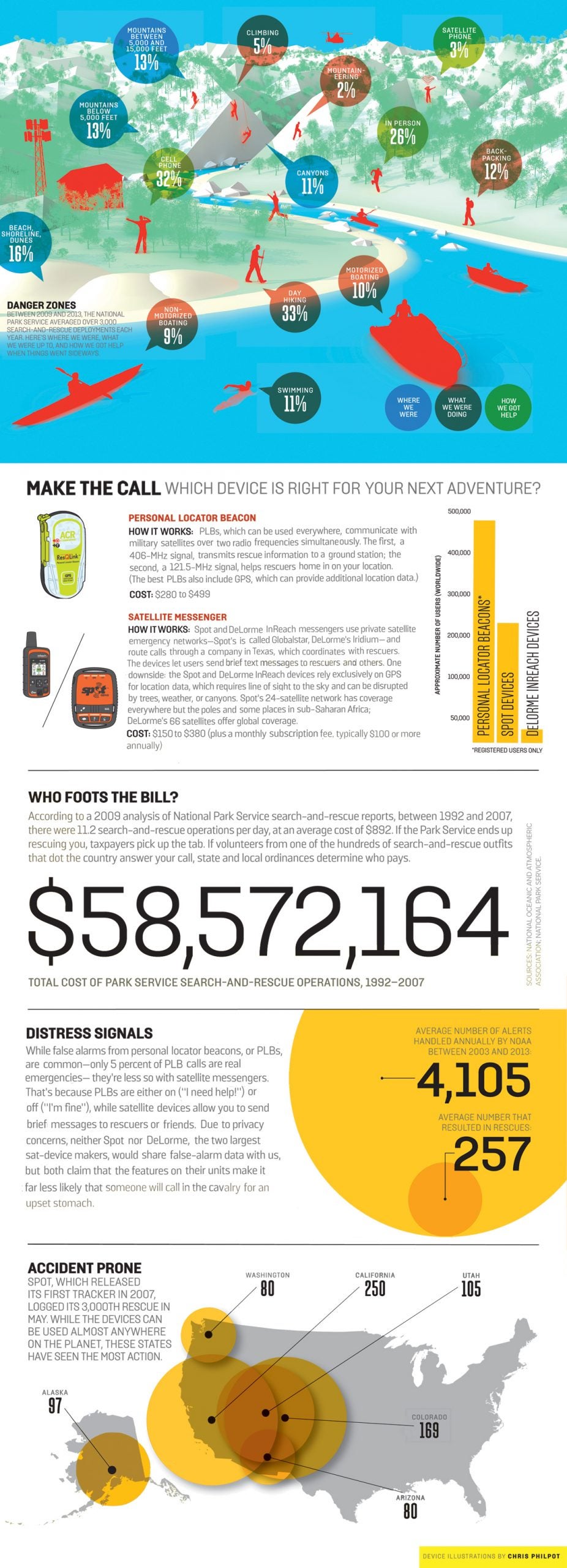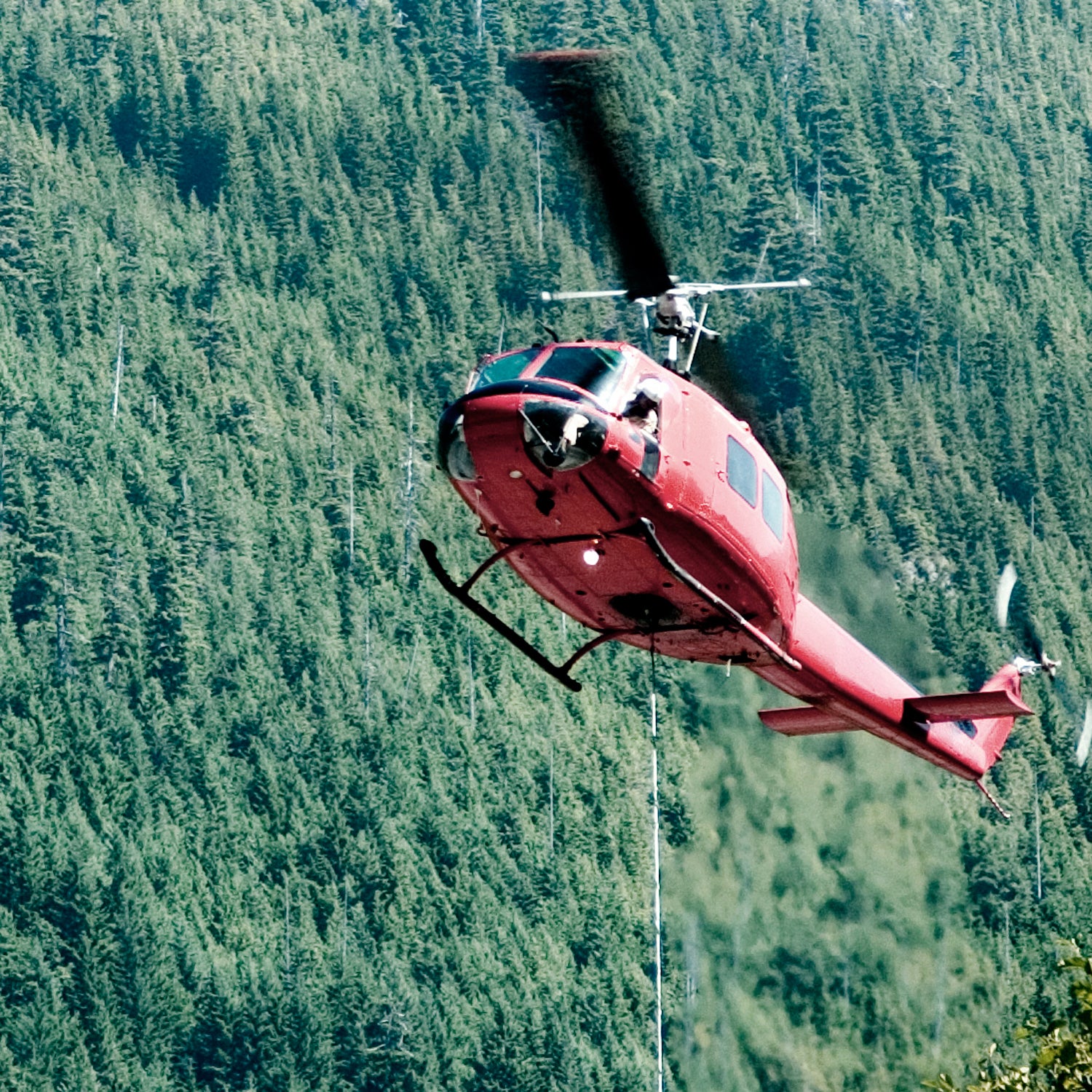People have been getting into trouble in the wilderness since before the term existed. What's changed is how we call for help.
New technologies make it easier than ever to broadcast our plight; they also increase our ability to cry wolf. Are we sounding more false alarms? It depends on the device: personal locator beacons, for example, are responsible for hundreds of false alarms every year, while cell-phone calls to park-ranger stations tend to be legit.
Of course, unnecessary alerts are only part of the picture. To better understand the changing landscape, we looked at reams of data from various search-and-rescue agencies.



